Animals of the Amazon | 10 Amazing Rainforest Creatures
Meet The Animals of the Rainforest
The Amazon Rainforest is one of the most extraordinary places on Earth. Stretching across nine countries in South America, it’s home to millions of species of plants and animals — many of which can’t be found anywhere else. In this post, we’re taking a closer look at some of the most fascinating creatures that call the Amazon home. From powerful predators to tiny frogs with brilliant colors, these animals are as diverse as the rainforest itself.
Species
Jaguar
Panthera onca
The largest cat in the Americas, the jaguar is a powerful swimmer and stealthy hunter. Its golden coat with dark rosettes makes it one of the most iconic animals of the Amazon.
- Fun fact: Jaguars often hunt by ambush and prefer water-rich habitats.
- Did you know? Their name comes from the Indigenous word “yaguar”.
- Bonus quirk: They’re the only big cats in the Americas and love swimming!
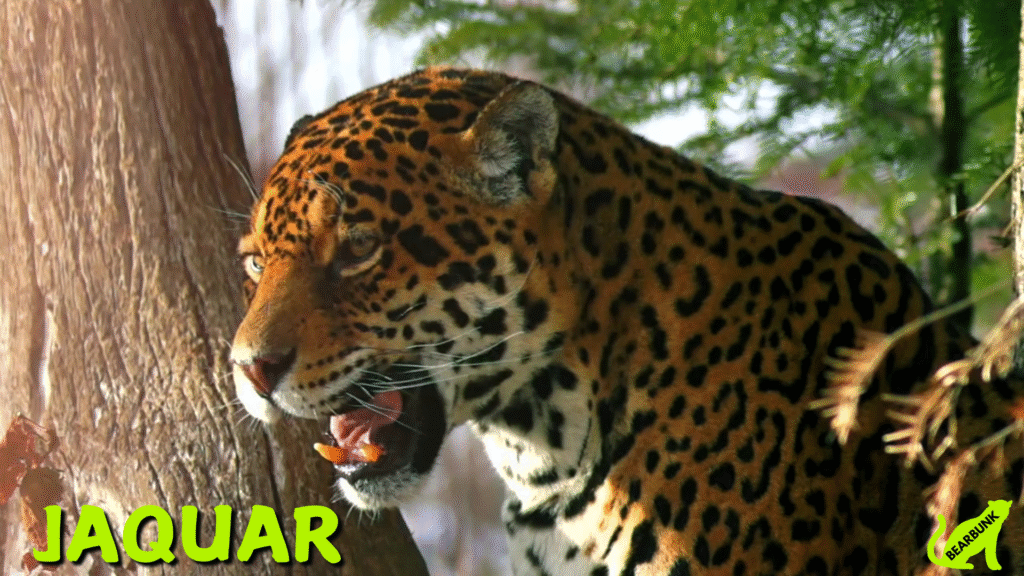
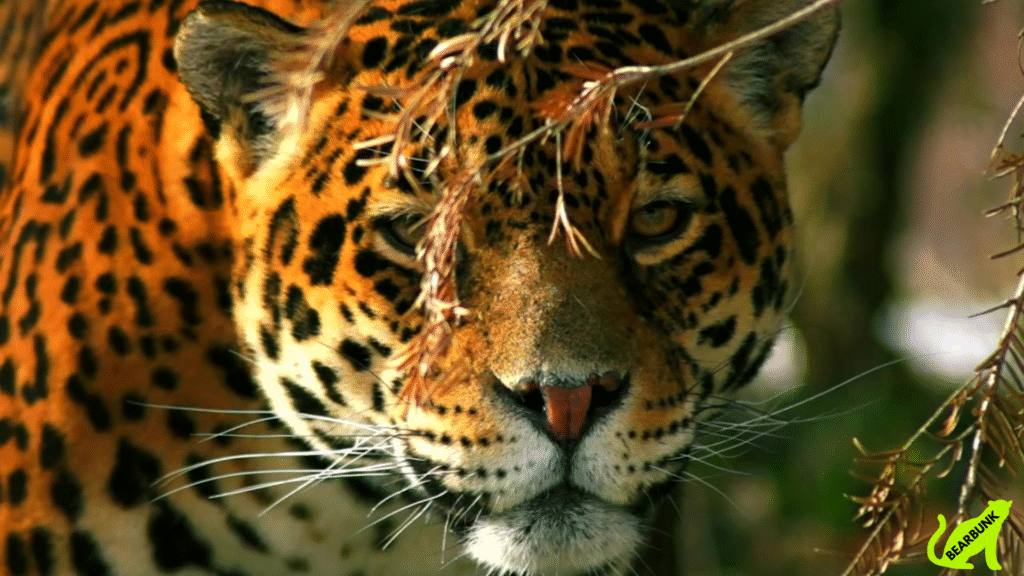
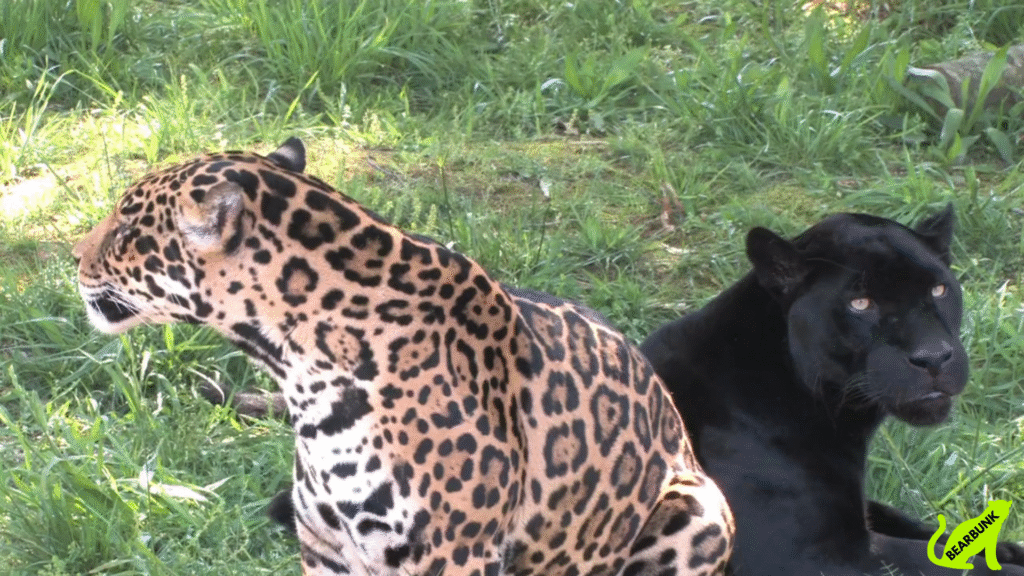
Pink River Dolphin
Inia geoffrensis
These freshwater dolphins are unique to the Amazon. They’re born gray but turn pink as they age or when they’re excited. With flexible necks and playful personalities, they’re true rainforest treasures. These pink-toned freshwater dolphins — called boto — are playful, smart, and full of local legend. Their flexible necks help them twist and turn through murky waters.
- Fun fact: Males are usually pinker than females due to fighting scars.
- Did you know? They can move each side of their mouth independently when echolocating.
- Bonus quirk: Legends say they turn into handsome men and charm villagers!

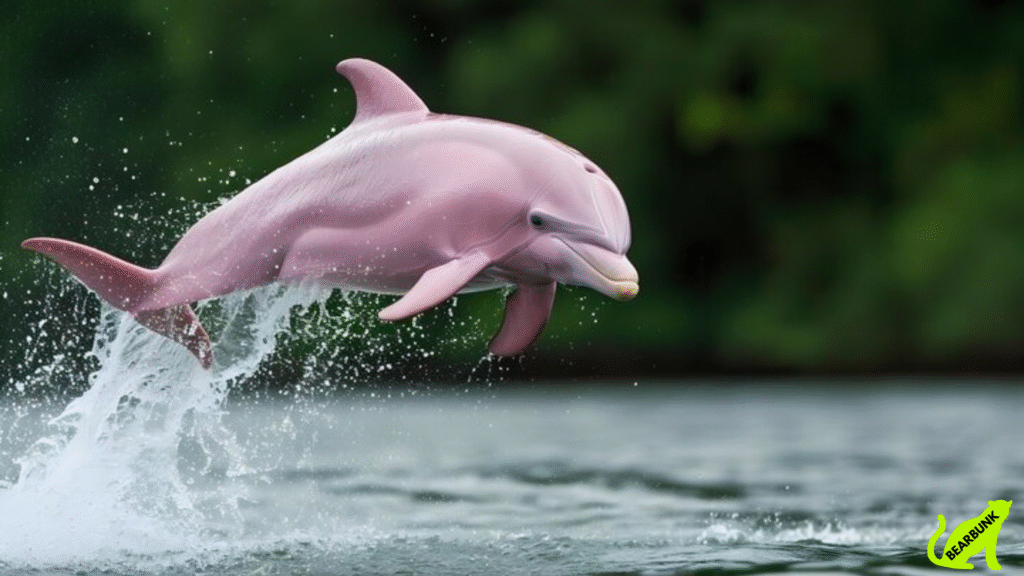
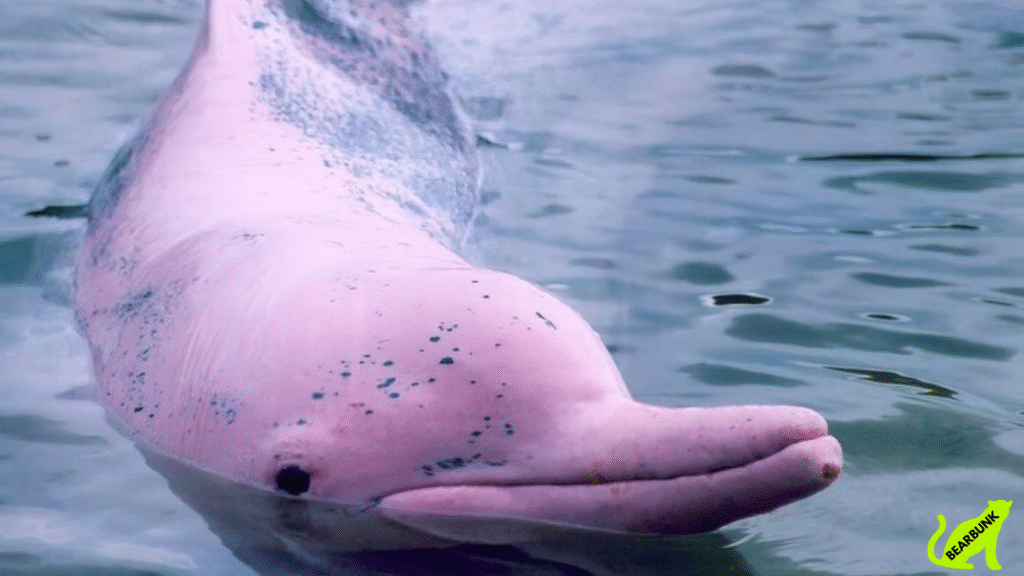
Green Anaconda
Eunectes murinus
One of the world’s heaviest snakes, the green anaconda can grow more than 20 feet long! It spends much of its life in water, perfectly adapted for life in swampy rivers. Massive, mysterious, and often misunderstood, the green anaconda is one of the largest snakes in the world. Found in slow-moving Amazonian waters, it’s more bulky than long — built for stealth and strength.
- Fun fact: Green anacondas can weigh over 500 pounds!
- Did you know? They give birth to live young — up to 40 at a time.
- Bonus quirk: Despite their fearsome size, they rarely attack humans and often avoid confrontation.
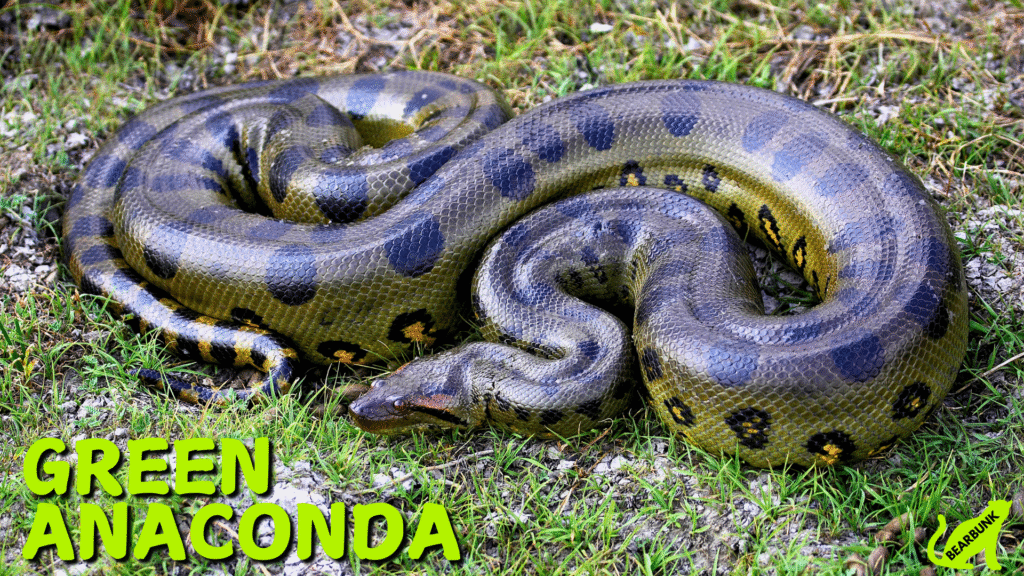
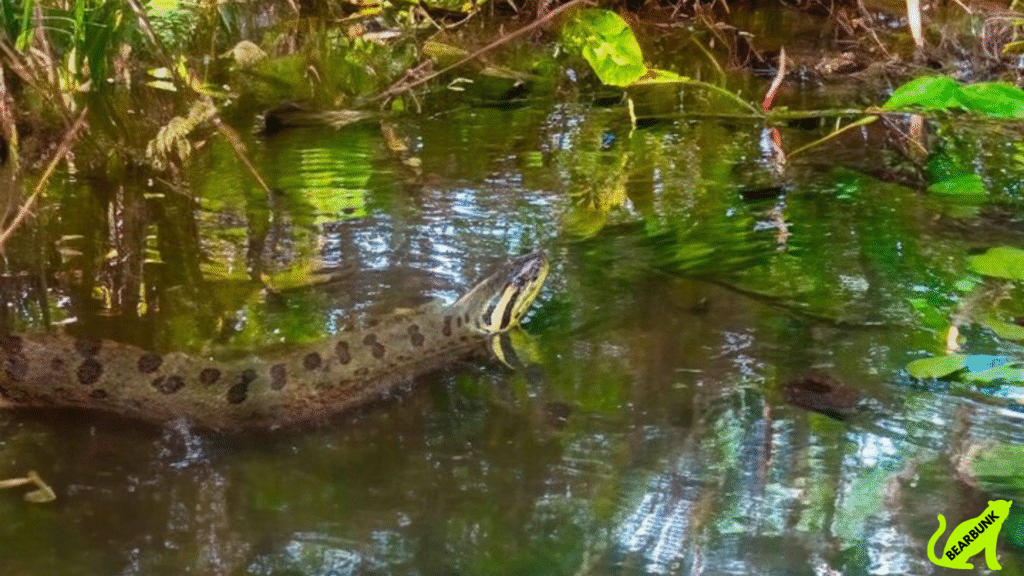
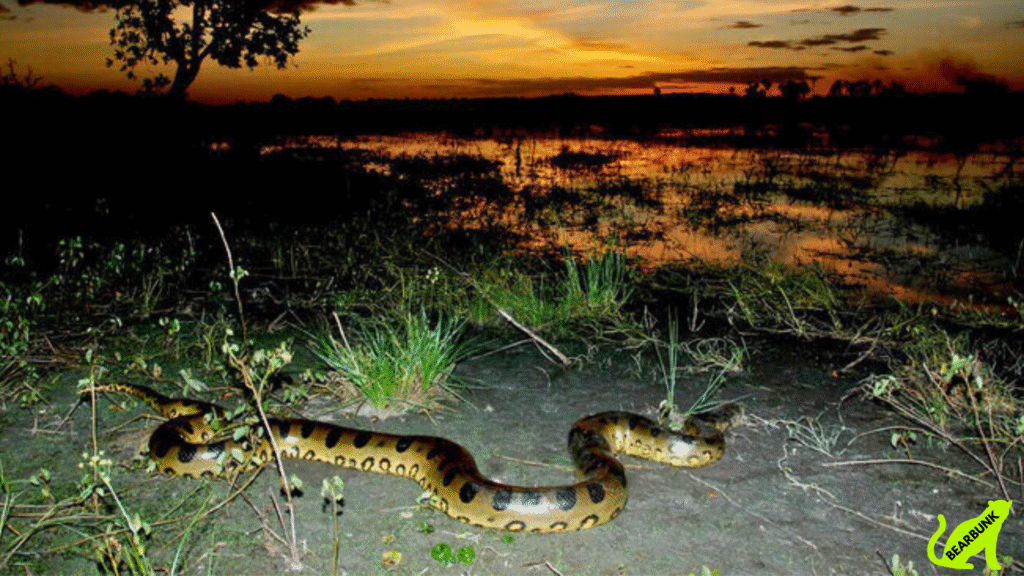
Harpy Eagle
Harpia harpyja
This massive bird of prey has talons bigger than a bear’s claws. With a seven-foot wingspan, the harpy eagle is both powerful and graceful, gliding through the rainforest canopy. One of the world’s most powerful eagles, the harpy has massive talons and a striking feathered crest. It rules the treetops with silent precision and deadly accuracy.
- Fun fact: Harpy talons are longer than a grizzly bear’s claws.
- Did you know? They hunt monkeys and sloths — lifting prey equal to their own body weight.
- Bonus quirk: Despite their fearsome size, harpies are very elusive and rarely seen.



Giant Anteater
Myrmecophaga tridactyla
Long snout, fluffy tail, and a sticky tongue that flicks 150 times a minute — giant anteaters are gentle, solitary insect-eaters with an incredible sense of smell. With its long snout, bushy tail, and slow, deliberate gait, the giant anteater is one of the Amazon’s most unique mammals. It may look odd, but it’s perfectly adapted to devour thousands of ants and termites daily.
- Bonus quirk: Giant anteaters walk on their knuckles to protect those huge claws from wear.
- Fun fact: It has no teeth — just a long sticky tongue up to 2 feet long!
- Did you know? Its front claws are so powerful that jaguars and pumas tend to avoid them.



Red Howler Monkey
Alouatta seniculus
Known for their thunderous calls, red howler monkeys can be heard from two miles away. They spend most of their time resting in the treetops and play an important role spreading seeds. Known for their deep, echoing calls that can travel for miles, red howler monkeys live high in the canopy and rarely come down. Their voices are a staple of the Amazon soundtrack!
- Fun fact: Their howls can be heard up to 3 miles away through dense jungle.
- Did you know? They have prehensile tails that work almost like a fifth limb.
- Bonus quirk: They spend most of their day resting and digesting — up to 80% of their time!



Crested Oropendola
Psarocolius decumanus
This striking black bird with a yellow tail is a master nest-builder. Males weave long hanging nests in colonies while singing quirky bubbling calls to attract mates. With striking yellow tail feathers and a bubbling, gurgling call, this bird is as bizarre as it is beautiful. Their hanging, woven nests look like ornaments dangling from tree branches.
- Fun fact: Their name comes from the Latin “oro” (gold) and “pendola” (to hang).
- Did you know? Males inflate their throat sacs and flip upside down during mating displays!
- Bonus quirk: Colonies may contain dozens of hanging nests from the same tree.



Tarsier
Tarsius (Amazon population debated)
Tiny primates with eyes bigger than their brains, tarsiers are incredible leapers, jumping up to 40 times their body length. Their swiveling necks and huge eyes give them an almost alien appearance.
- Fun fact: Each of their eyes is as large as their brain!
- Did you know? They can rotate their heads nearly 180 degrees in both directions.
- Bonus quirk: Tarsiers are entirely carnivorous, feeding on insects and small vertebrates.



Poison Dart Frog
Dendrobatidae
These brightly colored amphibians come in shades of yellow, blue, red, and green. Their vivid colors warn predators that some species are toxic — while others are harmless mimics. These infamous fish have powerful jaws and a reputation for frenzy, but in reality, most are shy scavengers unless threatened or starving.
- Fun fact: Some species are only the size of a paperclip.
- Did you know? Their toxicity comes from the insects they eat in the wild.
- Bonus quirk: Dart frogs are incredible parents — some carry tadpoles on their backs!



Piranha
Serrasalmidae
Famous for their sharp teeth, piranhas are more cautious than their reputation suggests. Some species even eat plants! The black piranha’s bite is one of the strongest relative to its size. These infamous fish have powerful jaws and a reputation for frenzy, but in reality, most are shy scavengers unless threatened or starving.
- Fun fact: They have interlocking teeth and can strip prey in minutes.
- Did you know? They’re important for the ecosystem, cleaning up dead or dying animals.
- Bonus quirk: Piranhas bark! They make warning sounds when threatened.



Bonus Animals of the Amazon
Toucan
(amphastos toco)
Toucans are known for their oversized, colorful beaks—which help them reach fruit, regulate heat, and even defend themselves. They’re surprisingly agile flyers for such awkward-looking birds!
- Fun fact: Their beaks may look heavy, but they’re made of keratin and are actually hollow.
- Did you know? They sometimes toss fruit into the air and catch it mid-fall.
- Bonus quirk: Toucans nest in tree hollows and sleep with their beaks tucked under their wings.
- Toucan Blog: Colorful Toucans: Rainforest’s Rainbow-Beaked Beauties!
Leafcutter Ant
(Atta cephalotes)
These tiny powerhouses slice and carry leaf pieces many times their own body weight. But they don’t eat the leaves—instead, they use them to grow fungus, which is their real food source.
- Fun fact: A single colony can include millions of ants!
- Did you know? They have different job roles—workers, soldiers, and even waste managers.
- Bonus quirk: Leafcutters can build underground tunnel systems spanning up to 98 feet.
Macaw
(Ara macao)
With vibrant feathers and loud squawks, macaws are social, intelligent parrots often seen flying in pairs. Their strong beaks crack nuts and seeds, and their long tails help them maneuver through jungle canopy.
- Fun fact: Macaws can live 50+ years in the wild and over 70 in captivity.
- Did you know? They form lifelong pair bonds and often groom each other.
- Bonus quirk: Macaws use clay licks to detoxify their diet—eating mineral-rich clay along riverbanks.
- Macaw Blog: Brilliant Macaws: 15 Fascinating Facts About Nature’s Colorful Geniuses
Habitat
All of these animals thrive in the unique environments of the Amazon Rainforest — from slow-moving rivers to dense canopy treetops. Some, like the jaguar and harpy eagle, need large territories of unbroken forest, while others, like frogs and monkeys, rely on smaller pockets of trees and wetlands. Protecting these habitats is essential to keeping the Amazon’s ecosystem balanced.
Diet
The Amazon’s animals eat a wide range of foods:
- Harpy eagles prey on monkeys and sloths.
- Poison dart frogs and tarsiers feast on insects.
- Giant anteaters specialize in ants and termites.
- Piranhas eat fish, plants, and even fruit.
- Red howler monkeys prefer leaves and fruit, spreading seeds as they travel.
Every diet plays a role in the health of the rainforest.
Raising Young
- Harpy Eagles mate for life and raise just one chick every couple of years.
- Jaguars are solitary, with mothers raising cubs on their own.
- Howler monkeys live in family groups, with females caring for the babies.
- Poison dart frogs are surprisingly dedicated parents — some species carry tadpoles on their backs to water pools in bromeliad plants.
Fun Facts
- Pink river dolphins sometimes play with turtles and fish, tossing them like toys.
- Harpy eagle talons can be up to 5 inches long.
- Giant anteaters have no teeth — just a tongue that can stretch two feet!
- Red howler monkeys spend up to 80% of their day resting.
- Tarsiers can rotate their heads almost 180 degrees like owls.
- Poison dart frogs can live more than 10 years in the wild.
- Piranhas replace their teeth in whole blocks, like conveyor belts.
- Crested oropendolas can build nests over three feet long.
About the Animals of the Amazon
The Amazon Rainforest is one of the most biodiverse regions in the world, with new species discovered every year. From the top of the canopy to the depths of the rivers, each animal plays an important role in keeping the ecosystem healthy.
Why We Love Them
These animals remind us just how unique the Amazon is. From the jaguar’s strength to the tiny poison dart frog’s brilliant colors, they show the beauty and diversity of creation. They’re also a reminder of why it’s so important to protect the rainforest for future generations.
The Amazon is full of wonders — some big, some small, all amazing. By learning more about its animals, we can better appreciate the delicate balance of this ecosystem and the need to care for it. Whether you love fierce predators, colorful birds, or tiny frogs, the Amazon has something to inspire every animal lover.
Conclusion
The Amazon is full of wonders — some big, some small, all amazing. By learning more about its animals, we can better appreciate the delicate balance of this ecosystem and the need to care for it. Whether you love fierce predators, colorful birds, or tiny frogs, the Amazon has something to inspire every animal lover.
💚 By learning about the amazing animals of the Amazon Rainforest, we can help raise awareness for their conservation — and celebrate the wonders of the Amazon’s wildlife.
🦎💚 Stay curious — and keep exploring more amazing animals right here at BearBunk
Did you learn something new? Share this post to your favorite board or group and help others fall in love with the wild world of reptiles.
Watch the Video on YouTube:
Animals of the Amazon | 10 Amazing Rainforest Creatures – YouTube
Learn more about:
Mammals, Primates, Rainforest, Wildlife Wonders, and African Wildlife
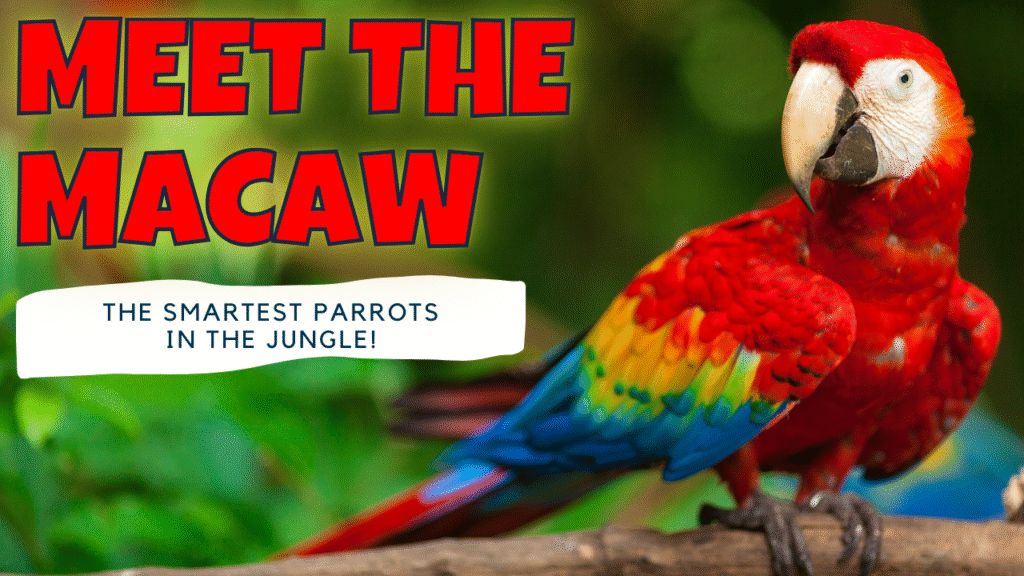



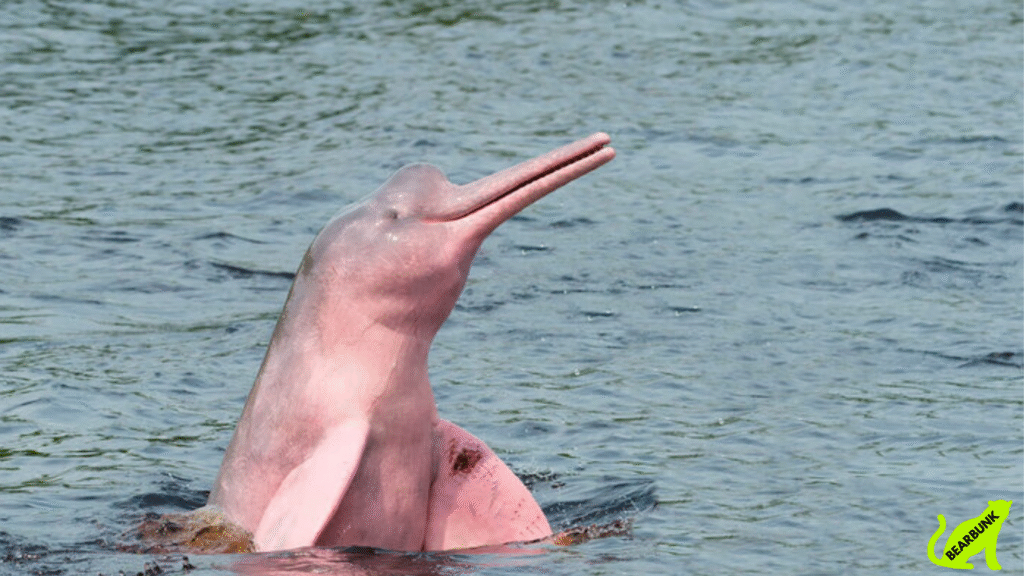
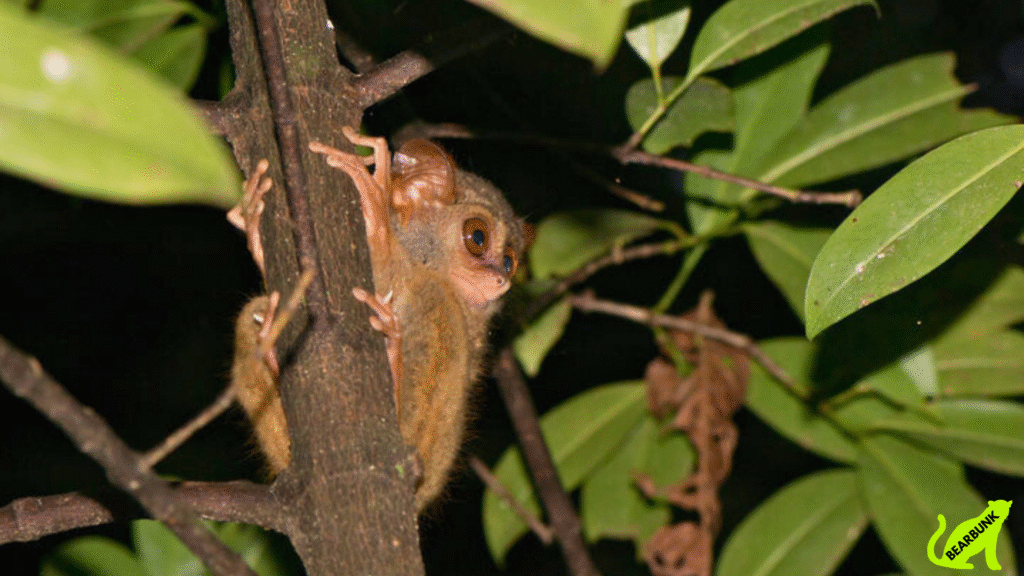
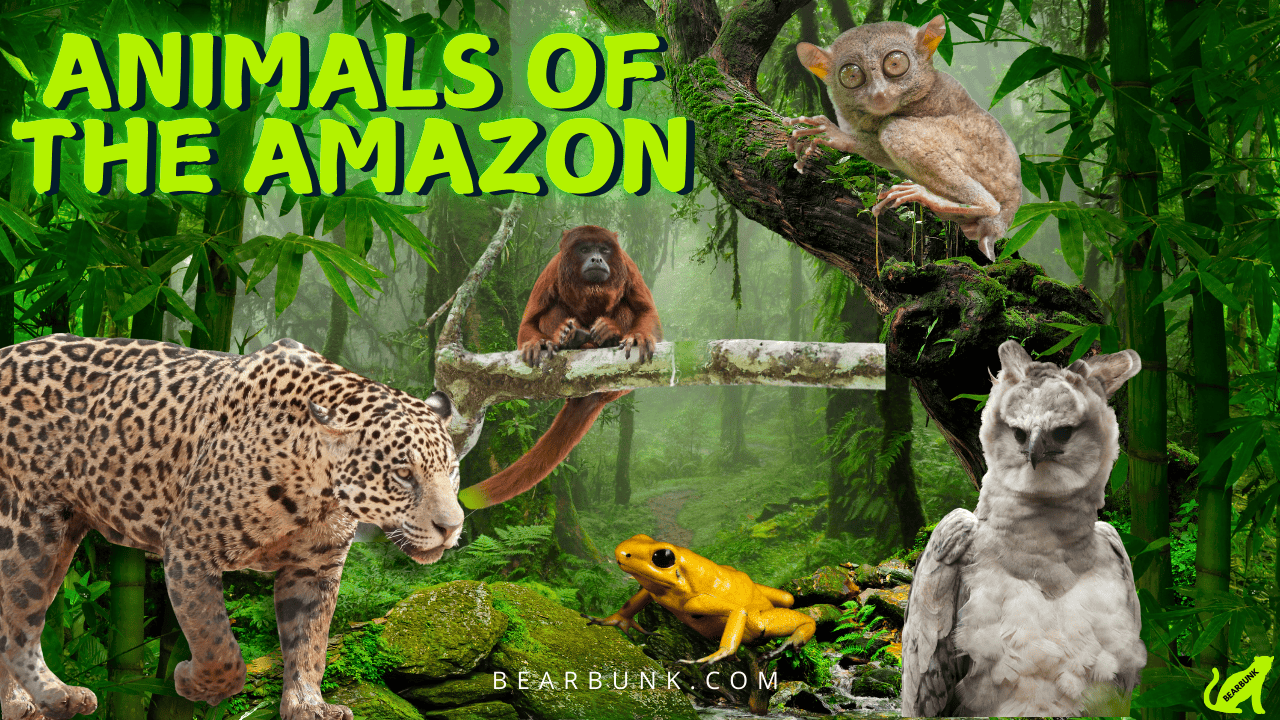
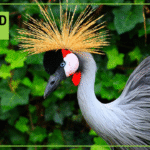




Leave a Reply